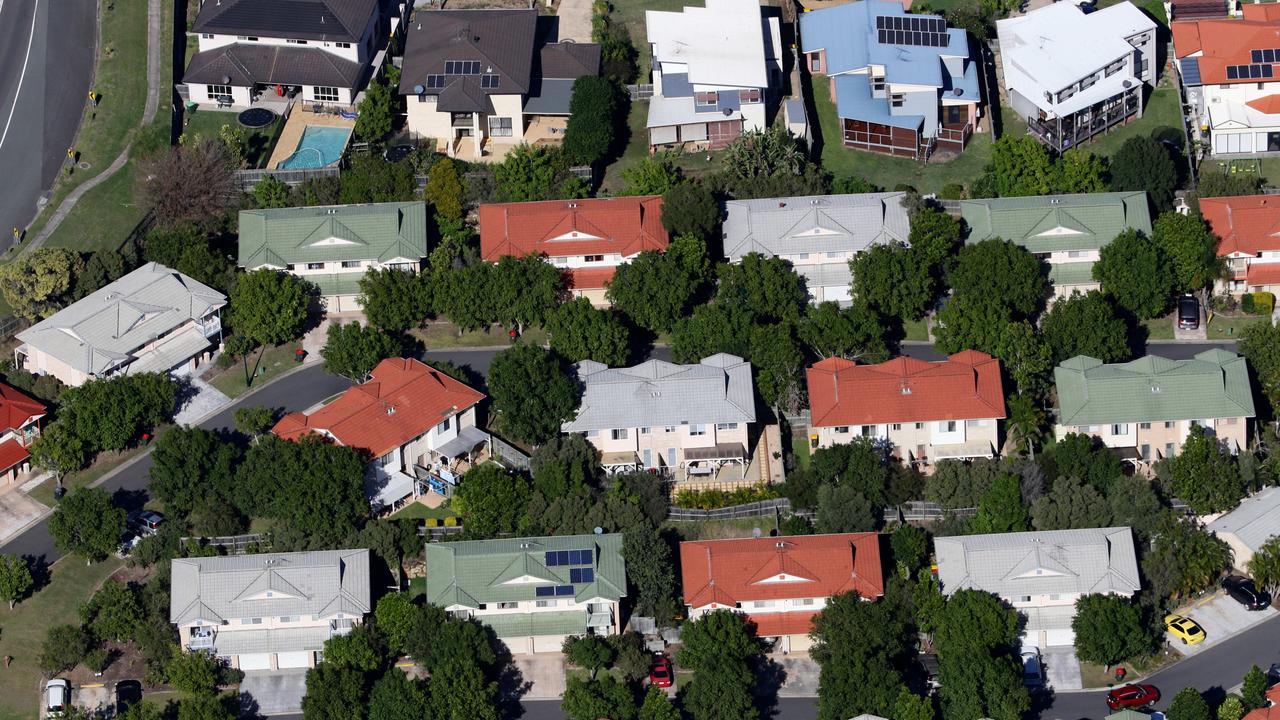Rental emergency: 91 per cent of suburbs in crisis after price surges
Queensland is staring down a humanitarian disaster with a shocking 91 per cent of Brisbane suburbs now in rental crisis, and regional Qld close behind. SEE BREAKDOWN OF 489 SUBURBS

A shocking 91 per cent of Brisbane suburbs are now in rental crisis after rents rose as much as 25 per cent, and regional Queensland is close behind, with calls for emergency measures to stop a disaster.
The latest SuburbTrends Rental Pain Index for May 2024 found the rental crisis had deepened to such a severe level that urgent emergency shelters, prefabricated and mobile homes were now required across Queensland to avert an even worse disaster.
SuburbTrends founder Kent Lardner said Queensland’s rental pain index had escalating to 81.39 per cent – “underscoring the acute stress felt by renters” – with a massive 91 per cent of Greater Brisbane suburbs now sitting at 70 per cent or more and 88.7 per cent of those in regional Queensland.
MORE: RBA interest rate rise warning as inflation persists
New laws: Smokers can now be banned from their own balconies
Brisbane property market overtakes Melbourne: No end in sight to price rises
Eight of the 18 hardest hit suburbs – where the rent pain index is now 100 per cent – are in Greater Brisbane, of which half were in Moreton Bay North – Caboolture, Clontarf, Woodford-D’Aquilar and Caboolture South with others being Wacol and Riverview in Ipswich, Taigum-Fitzgibbon in Brisbane’s North and Slacks Creek in Logan-Beaudesert. The majority of rent increases in those areas averaged 11 to 14 per cent in the past 12 months though two suburbs were pushed to critical off rises of 6 and 9pc. All eight were showing households using 35 to 37 per cent of income on current rent.
Of the 10 located across regional Queensland that hit 100 on the rent pain index, four were in Cairns region – Daintree, Manunda, Yorkeys Knob-Machans Beach and Innisfail. Two were on the Sunshine Coast – Tewantin and Maroochy Hinterland, two in Wide Bay – Tinana and Svensson Heights-Norville, with the remaining two being Bowen in the Mackay-Isaac-Whitsunday region and Emu Park in Central Queensland.


Mr Lardner warned the shocking figures were “a looming reckoning for the political class, who have long neglected the growing distress of the renter class”.
“These are the hardest hit,” he said of those that are sitting on 100 rent pain index, “You’ve had a really bad 12 months, you’ve got a bad 12 months ahead, you’ve got a bad current situation where you can’t find anything else.”
He said “the whole Greater Brisbane region is in a mess” and could see more tent cities emerge in the lead-up to the Olympics unless action was taken now to increase publicly funded housing.
“Politicians need to get in their cars and get out there and see where all these tent cities are emerging because there’s going to be a lot more of them,” he warned.
“Brisbane was always known for its affordability, it was one of the drivers for people wanting to move there from when I was kid. Now I look across the region and 30 per cent of your household income is being allocated to rent but some are getting up well and truly above that.”

The highest average rent increase over the past 12 months was out of Darling Downs-Maranoa region where Crows Nest-Rosalie copped a 29pc hike, Wambo rose 26pc and Pittworth was up 25pc.
The biggest rise out of Greater Brisbane was in the Logan-Beaudesert area which has become popular with interstate investors – with Logan Village seeing a 25pc rise in rents in the past year and Mount Warrent Park absorbing a 24pc jump, a rise which was also seen in popular university suburb Kelvin-Grove-Herston.
The Rental Pain Index is a monthly report by SuburbTrends that tracks price trends, availability and affordability of rental properties, aggregating that to a single score. Anything above 75 is a crisis situation.
Mr Lardner said “immediate focus must be on implementing emergency accommodations and creating incentives for homeowners to offer under-utilised properties for rent. These measures are crucial stopgaps that can provide some relief in the short term.”
See the latest PropTrack Home Price Index
He said there also needed to be more incentives for homeowners to bring under-occupied houses into the rental market to use existing housing stock.
“As the construction of new homes lags behind demand, exacerbated by stringent building codes that drive up prices, we find ourselves at a critical juncture. We must act decisively to deploy emergency shelters and rethink our housing policies to include more immediate, practical solutions such as mobile home villages and prefabricated homes.”
“The time to act is now, to prevent a deeper crisis where more Australians face the grim reality of homelessness.”


